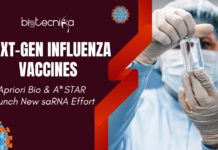FDA Platform Technology: What It Means for Innovation, Safety, and Faster Approvals
The new FDA Platform Technology program has only been active for a few months, but it has already stirred up plenty of conversation and confusion across the biotech industry.
The idea is simple on paper. If a company develops a technology that can be reused to make several medicines, and has already proven it works in one approved drug, the FDA might officially recognize it as a “platform.” In theory, that recognition could make future drug reviews faster and more predictable.
But the rollout has not been smooth. Sarepta Therapeutics was the first company to receive the designation earlier this year for its AAV gene therapy system, only to have it taken away weeks later after deaths were reported in a clinical trial connected to the same technology. It sent shockwaves through the rare disease world and raised doubts about how strict the FDA might be.
Then in October, Krystal Biotech became the second company to receive the designation, this time for its herpes simplex–based gene delivery system. That move restored some confidence, even though scientists still debate whether Krystal’s platform can truly be applied to different types of medicines.
Despite the uncertainty, several biotechs are now seen as strong candidates. Here’s a closer look at six of them, and why each could be next in line.
Avidity Biosciences: RNA Medicines With a Twist
Avidity has built its entire business around a technology it calls AOCs, short for antibody-oligonucleotide conjugates. Think of them as guided missiles for RNA medicines. The antibody helps the treatment reach the right cells, while the RNA component does the work inside those cells.
The approach has so much potential that Novartis bought Avidity outright for $12 billion. None of the AOC-based drugs have been approved yet, but several are close.
The most advanced, del-zota, is being developed for Duchenne muscular dystrophy and could be submitted to the FDA next year. Two others, one for myotonic dystrophy and another for facioscapulohumeral muscular dystrophy, are also progressing quickly.
If Avidity gets even one product approved, its technology could immediately qualify for consideration.
Dyne Therapeutics: A Flexible Approach to Muscle Disease
Dyne is developing its own version of targeted delivery for genetic medicines. Its system, called FORCE, can carry different types of payloads, small RNA molecules, antisense therapies, and even full proteins. That flexibility gives Dyne a broader scientific reach than many of its competitors.
Its clinical pipeline includes treatments for Duchenne muscular dystrophy, myotonic dystrophy type 1 and Pompe disease. Early data has been encouraging, especially in myotonic dystrophy, where patients showed measurable improvement in muscle function. Like Avidity, Dyne has no approved products yet, but its technology is attracting steady attention from regulators and investors.
CRISPR Therapeutics: The Most Ready for the Designation
Among the six companies, CRISPR Therapeutics is arguably the closest to qualifying. It already has an FDA-approved product, Casgevy, the first marketed CRISPR gene-editing treatment, developed with Vertex Pharmaceuticals. The therapy won approval for sickle cell disease in 2023 and for beta-thalassemia shortly afterward.
CRISPR is now building an entire pipeline off that same gene-editing system, including CAR-T therapies for blood cancers and potential treatments for autoimmune diseases. Because the platform has already been proven safe and effective in one approved drug, CRISPR checks the biggest box on the FDA’s list.
Most analysts believe the company stands a strong chance of receiving the designation once the FDA is ready to expand the program.
Beam Therapeutics: Editing DNA Without Cutting It
Beam takes a different approach to gene editing. Instead of cutting DNA, its base editors swap out a single letter of the genetic code. The idea is to make precise changes while avoiding some risks associated with traditional CRISPR techniques.
Beam does not yet have a drug on the market, but its early programs for alpha-1 antitrypsin deficiency and glycogen storage disease are already in human studies. Pfizer also placed a major bet on Beam’s technology in 2022, signing a deal worth up to $1.35 billion.
If base editing proves successful in clinical trials, Beam could become one of the most interesting platform candidates in the entire field.
uniQure: AAV Gene Therapy Veteran With One Approval
uniQure has been working on AAV-based gene therapy long before it became mainstream. Its treatment for hemophilia B, Hemgenix, won FDA approval in 2022, which means uniQure has already met the fundamental requirement for platform technology consideration.
The company is now applying the same AAV system to AMT-130, a therapy for Huntington’s disease. In long-term results shared this year, the treatment appeared to slow disease progression and improve key biomarkers.
However, the FDA recently told the company that the current data may not be enough to support an approval application yet. That delay complicates uniQure’s timeline, but its underlying platform remains strong.
Rocket Pharmaceuticals: Strong Science, Slower Momentum
Rocket uses lentiviral vectors to modify a patient’s stem cells outside the body. Its most advanced therapy, Kresladi, showed excellent survival results in children with LAD-1, a rare immune disorder. But the FDA refused approval earlier this year over manufacturing issues, not because of safety or efficacy.
The company has been working to resolve those issues in hopes of resubmitting, but progress has been slower than expected. Rocket also pulled back its filing for another treatment for Fanconi anemia due to strategic reasons.
Even so, its platform remains scientifically solid and could become a contender again once its regulatory path stabilizes.
A Program Still Taking Shape
The FDA Platform Technology program is still new, and no one yet knows how widely it will be applied. Sarepta’s revocation showed how cautious the agency plans to be, while Krystal’s designation proved that the pathway is very much alive.
For now, the six companies above are among the most closely watched. As gene and RNA therapies continue to evolve, these platforms may shape the next decade of drug development, and the FDA’s decisions could influence the entire direction of the biotech industry.





